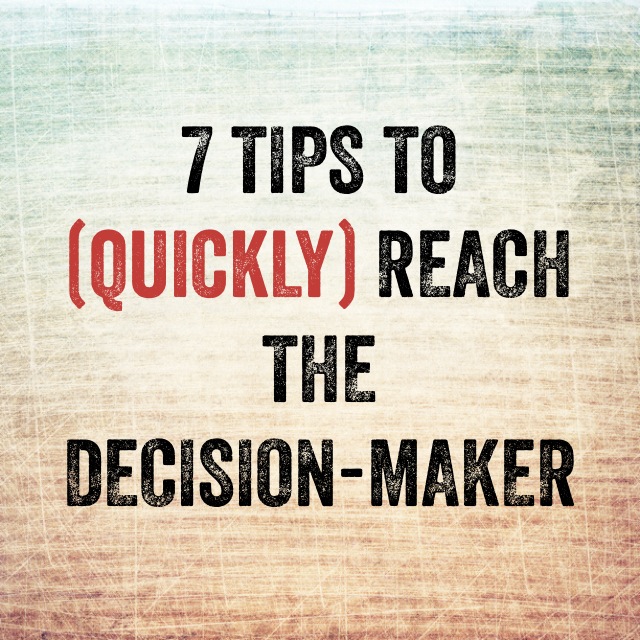
As salespeople, we make hundreds or even thousands of phone calls each week. However, our success relies on our ability to connect with the decision-maker. As an experienced business development representative, I have experimented with various methods for communicating with prospects through phone and email. Some tactics are effective, while others may lead to hang-ups. It can be a bit frustrating at times, but that’s when it’s important to pause and try a different approach to navigate through gatekeepers and automated systems. Reaching the decision-maker can be challenging, but there are strategies you might not have thought of that can help you connect with them quickly. Here are my 9 tips for reaching the decision-maker. Give them a try and see which ones work for you:
1. Use 0#.
In automated or name directories, you may not always find the right name or extension you need, so press “0#.” Contacting the operator to verify your prospect’s practice area can save you from searching for someone who isn’t there or has changed jobs. To connect with the decision-maker, avoid wasting time sifting through a directory with every call. If you reach the operator, ask for a direct line or extension, too.
2. Know what titles to ask for.
Sometimes the person you are trying to reach no longer works at the business you are prospecting, and you need to be prepared to provide the administrator with either another name or department to be transferred to. You should have a handful of titles that you want to get in touch with, and narrow that down as your calling efforts ensue.
3. Confirm the prospect’s title with the admin.
Your data could be outdated as people are changing positions all the time. Be sure you are making the best use of your time speaking with someone whose title is within your calling spectrum. You can get quality information from operators and administrators as they are usually the gateway to the organization. You wouldn’t want to reach the decision-maker without first understanding how he or she fits into the organization.
4. Tailor your messaging.
Even something this simple could help you in your prospecting efforts. If you are asking a staff member about C-level items, they might not know what you’re referring to and they could possibly refer you up. Although, it is better to communicate well with the person you’re speaking with so they understand what your product or service is, how it’s useful to them, and who within their organization would be the ultimate decision maker and best person to speak with. (Sales Engine advocates the use of a “sales trailer” for your business.”
5. Use referrals from colleagues.
Unless a prospect asks you not to use their name, always mention that you spoke with someone previously. It helps build trust and familiarity which is important to help you through the introductions of the conversation.
6. LinkedIn and CRMs.
The internet is an intimidating yet fantastic and endless resource. There are so many websites that can help you find titles, contacts, and company information to help you get closer to the correct decision-makers. Most professionals keep their LinkedIn up-to-date and this is one of the best ways to find out where someone is located and what their current role is. You can sign up for a free account or choose to upgrade to the premium version. Another resource could be your company’s very own CRM. Ask your fellow BDRs for help and see what contacts they have in their system, as you may find overlapping information that could be useful to your current project. It’s very likely that someone else in your organization has information that will make it easier to reach the decision-maker.
7. Calendar requests.
This is debated amongst BDRs at AG, and I agree that this action is project-dependent. I believe sending a calendar request to connect with a prospect for five minutes (or for a short introductory call) is extremely beneficial in discovering the best person to speak with. If a prospect accepts, they are either interested, or willing to help you with your navigation through the organization. If they decline, they can give you a reason as to the disinterest, or refer you to a more appropriate person related to the project.